-
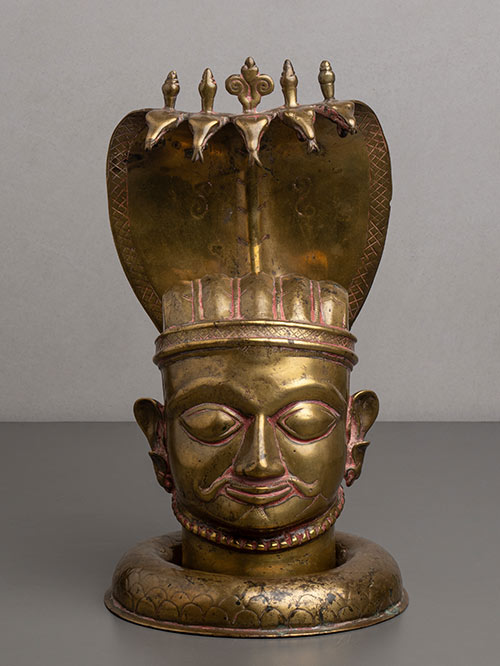

Karnataka (South India)
brass
A finely cast and decorated Mukhalingam, – the moustachioed Shiva wears a simple turban, delicate naga (snake) earrings and a beaded necklace. His head rests on the patterned coils of the serpent Vasuki whose five-headed hood forms a canopy over his head.
Shiva is one of the three principal deities of Hinduism. He is labelled the ‘destroyer’ with the Trimurti, Hinduism’s trinity which includes Brahma and Vishnu. While sometimes depicted iconically, he is usually worshipped in the aniconic from of a lingam. The lingam is shaped like a pillar with a round top and can be made of stone, wood or metal. Mukha-linga signifies a visage or face on a metallic, cylindrical casting used to cover a stone lingam. The cover is thought to protect the viewer from the harm that could occur on visualization of the linga, especially one with eyes painted on its surface, which is believed to energize the figure. The metallic visage iconically depicts Shiva, wearing his characteristic moustache, earrings and matted hair.
Size (cms): 30.5(H) x 17(W) x 17(D)
Size (inches): 12(H) x 6.5(W) x 6.5(D)
-
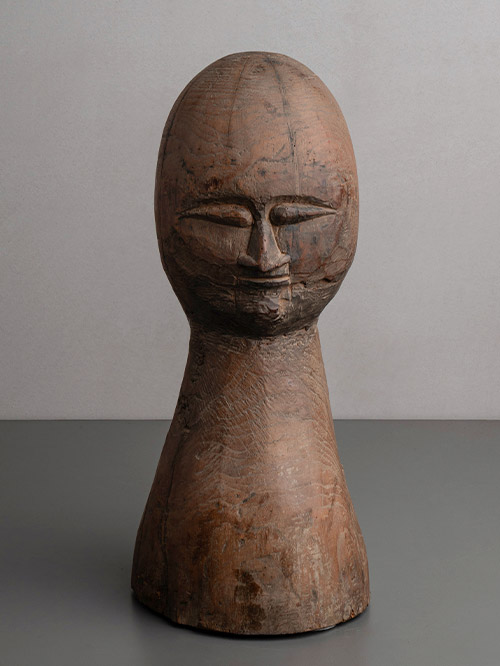
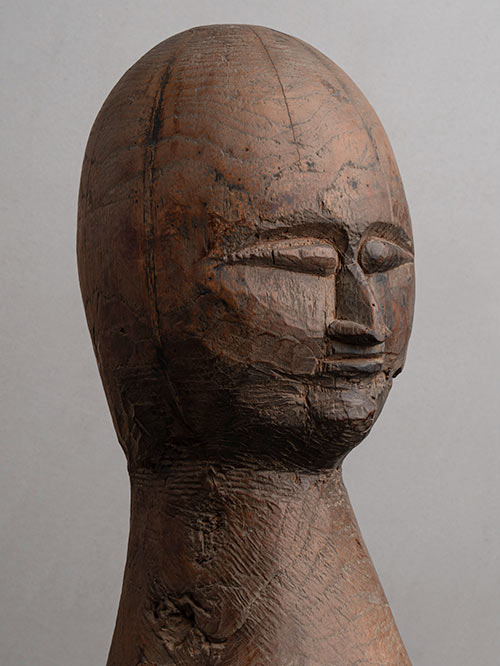
Western India
Wood
A striking patinated wooden turban stand that has been worn through use. It would have been used to hold a turban.
Size (cms): 39(H) x 17(W) x 19(D)
Size (inches): 15.5(H) x 6.5(W) x 7.5(D)
-
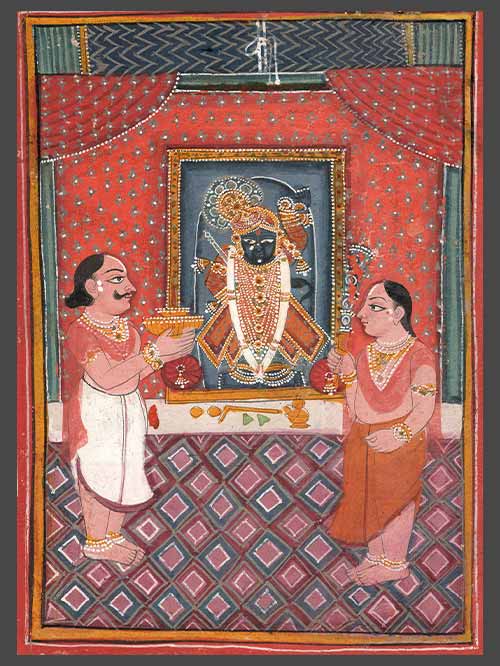
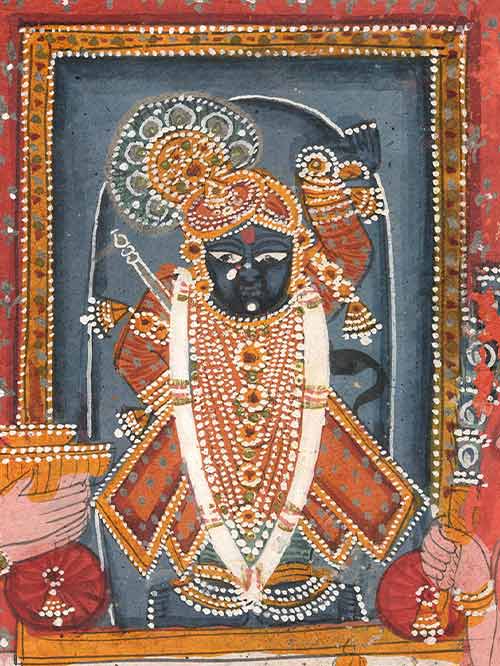
Nathdwara (Rajasthan)
Opaque pigments on paper
Srinathji wears a Chakdarwagha (coat with four pointed ends) with pyjama (trousers), a mustard upper garment, and a bejewelled raj mukuta or regal fan-shaped turban ornament. His left hand is raised to symbolize the lifting of the sacred mountain Govardhana, and he holds his cowherd’s stick (lakut). At his feet are two folded betel leaves and the jhari or covered pot of Jumna water, symbolising the ever-present love of his foster-mother Yashoda. Tilkayat Govindji and his young son Girdharji are seen on either side of Srinathji, the former carrying an arti lamp and the latter a peacock whisk. A chequered mauve and blue carpet lies underfoot, with a floral saffron pichhwai behind the deity and overhanging crimson curtains.
Painting Size (cms): 24(H) x 17(W)
Painting Size (inches): 9.5(H) x 6.5(W)
-
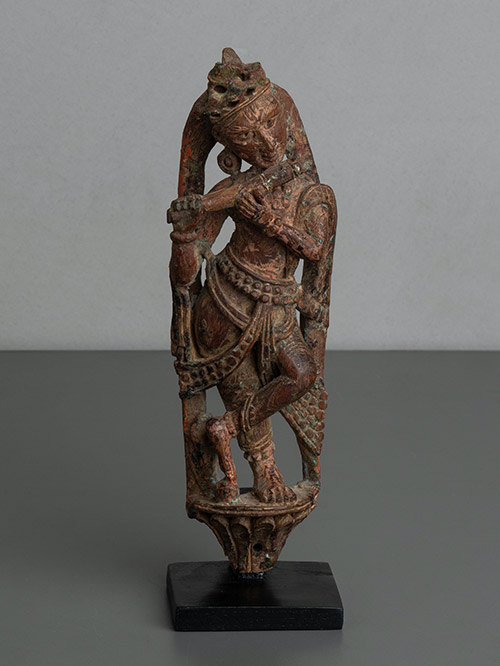
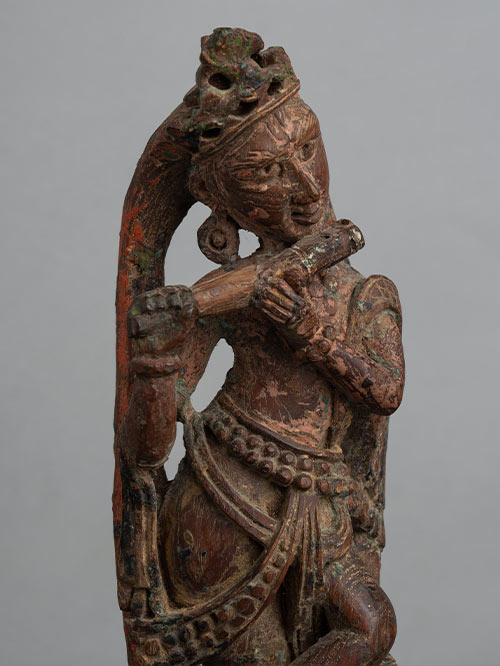
Gujarat
Wood with traces of polychroming
One of the most abiding images in Indian art is that of Krishna the flautist standing with his legs crossed at the ankles and playing the flute. He wears a decorative mukuta or crown, a dhoti and various necklaces, bangles and anklets.
The image of Venugopala rather late in Indian literature and art and it has been suggested that the classical myth of Orpheus may have exerted some influence. The idea derives from the lonely shepherd who plays his bamboo flute (venu) while tending his flock. While other cowherders f Braj hold a shepherd’s staff, Krishna’s staff is also his flute. He, however does not play upon it to please the cows, but to charm the gopis or cowherdesses
Size (cms): 24(H) x 7.5(W) x 6.5(D)
Size (inches): 9.5(H) x 3(W) x 2.5(D)
-
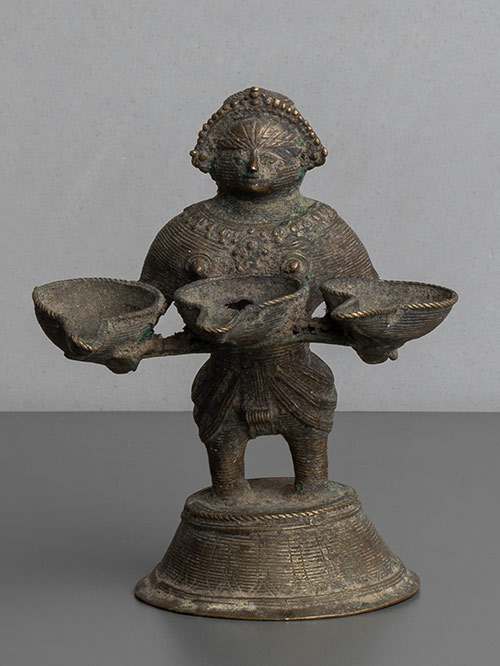
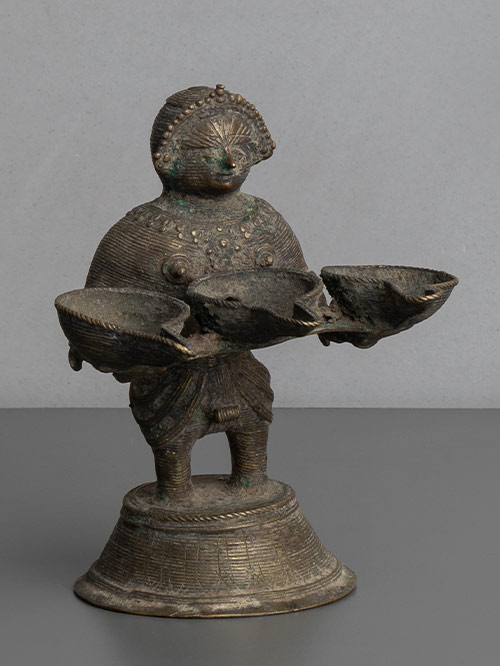
Bastar (Chhattisgarh, Central India)
Brass, Dokra work
An unusual Dipalakshmi lamp from the Bastar region, in the form of a female figure standing holding three teardrop-shaped lamp bowls in her hands. The fine cross-hatching and details are typical of Bastar casting. Dipalakshmi, the Goddess of light and wealth, is usually shown holding the lamp bowl in her hands cupped in the gesture of anjali or offering of the flame of ‘divine light’ which, when lit, kindles light into the image.
Dhokra is non–ferrous metal casting using the lost-wax casting technique. This sort of metal casting has been used in India for over 4,000 years and is still used. One of the earliest known lost wax artefacts is the dancing girl of Mohenjo-Daro. The product of dhokra artisans is in great demand in domestic and foreign markets because of primitive simplicity, enchanting folk motifs and forceful form. Dhokra horses, elephants, peacocks, owls, religious images, measuring bowls, and lamp caskets, etc., are highly appreciated.
Size (cms): 14(H) x 12(W) x 12.5(D)
Size (inches): 5.5(H) x 4.5(W) x 5(D)











